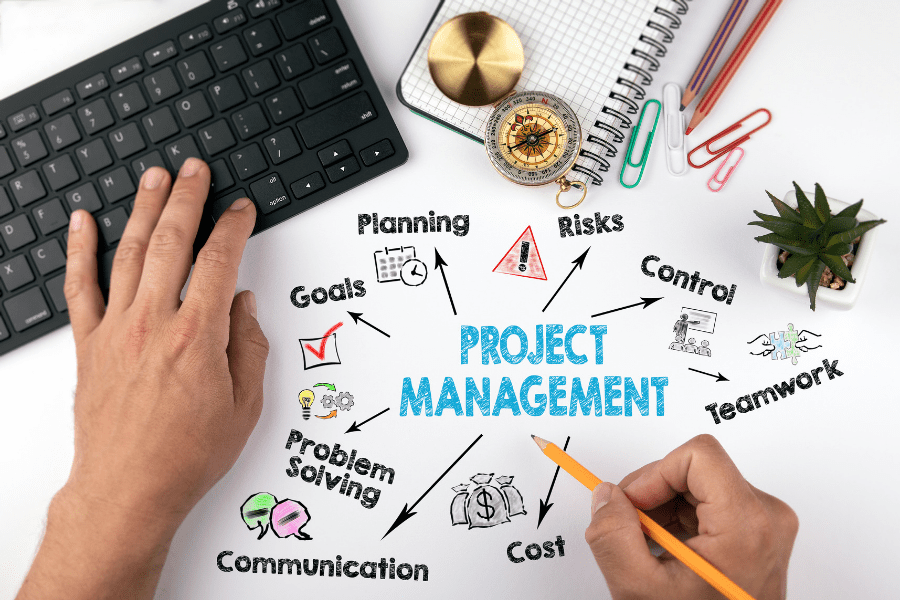By Laser 1 Technologies
8 Effective Project Management Best Practices
Managing a project is no easy feat. Set yourself up for success from start to finish by following these best practices.
- Set project guideposts: Before you ever begin, ensure your project stays on track by determining the various phases of your project, major milestones and end goal. These guideposts will help you chart your course, make necessary changes along the way and accomplish your project objectives.
- Define the project scope: At the same time as you set your project guideposts, define your project scope. This will clear up any questions about what details the project will and won’t include and makes it easy for team members to decide what to tackle and what to avoid along the way.
- Define individual job responsibilities and systems: When team members know exactly what is expected of them, they can pursue their roles with confidence and independence and facilitate an environment in which the entire team can flourish. Defining systems team members use to accomplish routine tasks also increases confidence and independence and strengthens the entire team.
- Delineate a plan: Planning out your project means listing your resources and establishing your boundaries with regard to scope and mission, scheduling, budgeting, personnel, control, risk and quality. This is yet one more best practice that serves to keep your project on track.
- Manage timeline adjustments and take corrective actions: When, not if, unexpected situations arise, take time to analyze them and attend to them directly. This may mean extending a deadline or reducing the scope of the project. While undesirable, tackling any variances head-on is the best way through to the other side and the best way to keep them from resurfacing down the road.
- Enact quality assurance: Quality assurance is a proactive approach to monitoring quality throughout the lifecycle of a project. It can help nip small problems in the bud and ensure that the end product reflects your team’s high standards.
- Facilitate healthy communication: Did you know that 57% of projects fail due to communication breakdown? Fostering healthy communication means creating an environment where team members feel comfortable sharing issues they’re having either related to project tasks or other team members. Explain the process for addressing any issues and respect team members by hearing them out and working to devise effective solutions.
- Develop a change management process: This process allows team members to discuss the pros and cons of possible changes that surface throughout the project lifecycle and address implementation strategies so as to minimize the disruption.
Keep morale high, your team on task and deliver a quality product by implementing these tips. Best practices always yield the best results.




